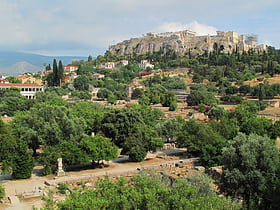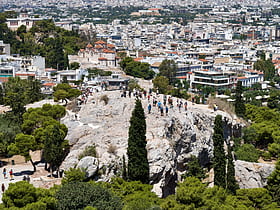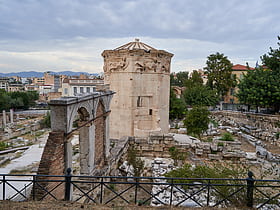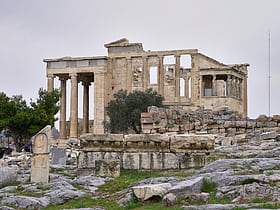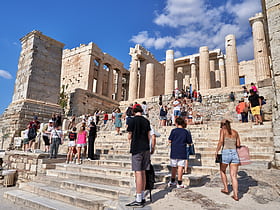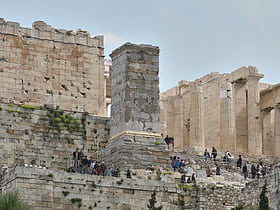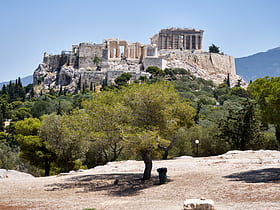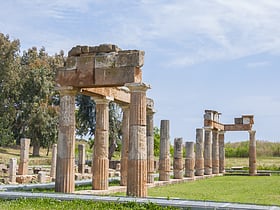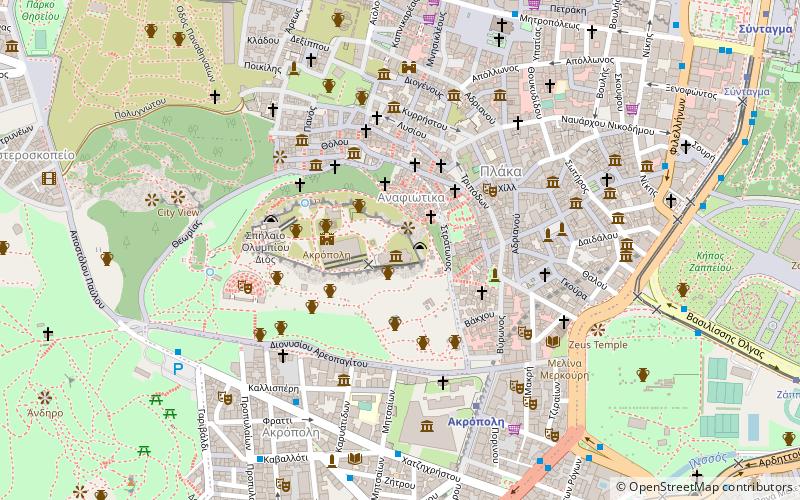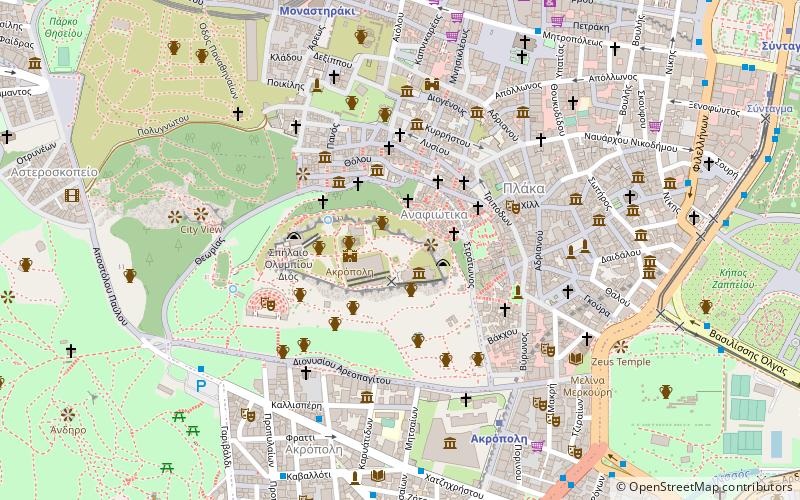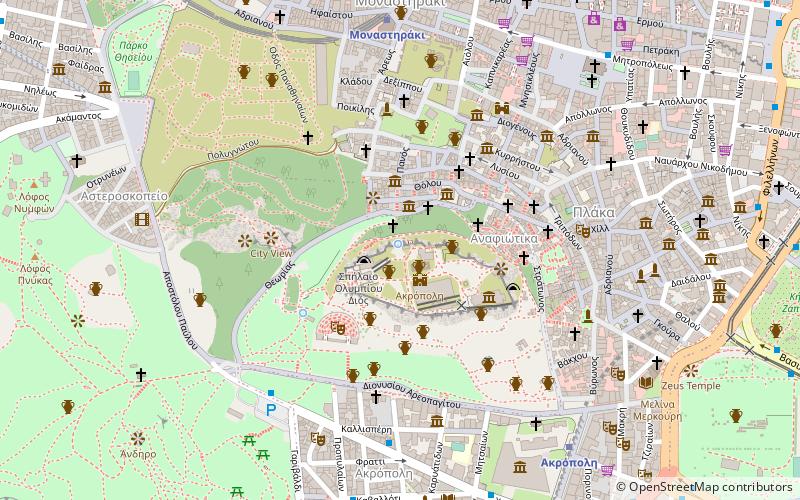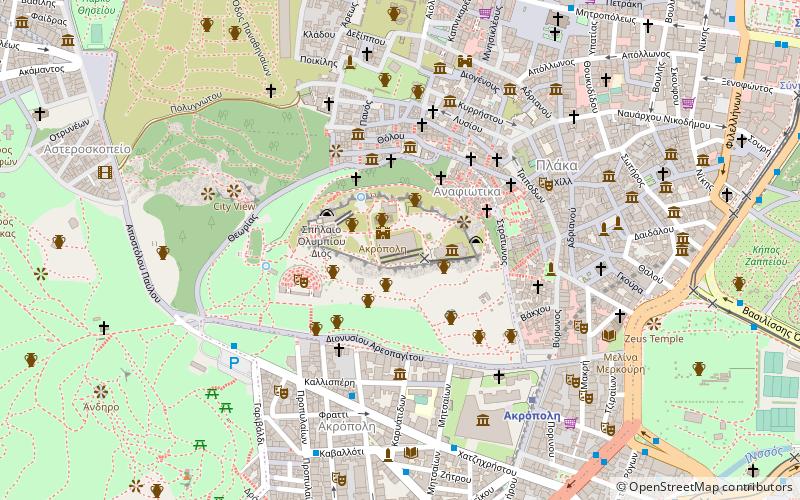Athens: Archaeological Site
Places and attractions in the Archaeological site category
Categories
- Museum
- Historical place
- Archaeological site
- Area
- Art museum
- Ancient Greek architecture
- History museum
- Monuments and statues
- Specialty museum
- Temple
- Street
- Ruins
- Church
- Park
- Memorial
- Archaeological museum
- Neighbourhood
- Unesco
- Concerts and shows
- Theater
- Square
- Sacred and religious sites
- Shopping
- Sport
- Sport venue
- Acropolis
- Performing arts
- Event space
- Natural attraction
- Library
- Universities and schools
- Nature
- Arenas and stadiums
Ancient Agora
Iconic Greek ruins with a museum Nestled at the heart of Athens, Greece, the Ancient Agora stands as a monumental testament to the city's rich historical and cultural past. This archaeological site, once the focal point of public life in classical Athens, served as a hub for political discourse...
Areopagus
Rocky hill with a long history Perched on a prominent rock outcrop in the heart of Athens, the Areopagus stands as a testament to the city's ancient heritage. This archaeological site, known for its rich history in law, philosophy, and democracy, offers a window into the judicial and social workings...
Tower of the Winds
Ancient tower to indicate weather and time The Tower of the Winds, also known as the Horologion of Andronikos Kyrrhestes, is a fascinating archaeological site situated in the Roman Agora of Athens, Greece. This ancient timepiece, constructed in the 1st century BC, stands as a testament to the ingenuity of...
Erechtheion
Iconic temple of ancient Greece The Erechtheion is a revered architectural marvel situated on the north side of the Acropolis of Athens, Greece. This ancient temple, constructed from 421 to 406 BCE, stands as a testament to the religious and cultural significance of the city during its classical...
Propylaea
The Propylaea stands as a monumental gateway at the western entrance of the Acropolis in Athens, Greece. This grand structure, designed by the architect Mnesicles, was constructed between 437 and 432 BCE during the golden age of Athens under the leadership of Pericles.
Pedestal of Agrippa
The Pedestal of Agrippa stands as a testament to ancient history in the heart of Athens, Greece. This historical landmark, once a monument celebrating the victories of Marcus Vipsanius Agrippa, is a significant relic located on the famous Acropolis of Athens.
Pnyx
The Pnyx is an ancient site nestled in the heart of Athens, Greece, emblematic of the city's rich democratic past. This archaeological treasure, located on a modest hill west of the Acropolis, served as the primary assembly location for Athenian citizens to debate...
Hadrian's Library
Ruins of ancient Roman library Hadrian's Library, located in the vibrant heart of Athens, Greece, is a testament to the city's rich historical tapestry. Constructed in the 2nd century AD during the reign of Emperor Hadrian, this ancient site once served as a cultural and intellectual hub, housing an...
Theatre of Dionysus
Ancient tiered performance arena The Theatre of Dionysus is an ancient Greek theatre in Athens. It is built on the south slope of the Acropolis hill, originally part of the sanctuary of Dionysus Eleuthereus.
Brauroneion
The Brauroneion was the sanctuary of Artemis Brauronia on the Athenian Acropolis, located in the southwest corner of the Acropolis plateau, between the Chalkotheke and the Propylaea in Greece. It was originally dedicated during the reign of Peisistratos.
Temple of Apollo Zoster
The Temple of Apollo Zoster is an ancient Greek temple, the remains of which are located at Vouliagmeni in Athens, Greece.
Pandion
The Sanctuary of Pandion is the name sometimes given to the remains of a building located in the south-east corner of the Acropolis of Athens. Its foundations were found during the excavations for the construction of the Old Acropolis Museum.
Sanctuary of Zeus Polieus
The Sanctuary of Zeus Polieus was a walled open-air sanctuary dedicated to Zeus Polieus around 500 BC on the Acropolis of Athens, sited to the Erechtheion's east.
Odeon of Athens
The Odeon of Athens or Odeon of Pericles in Athens was a 4,000 m2 odeon, built at the southeastern foot of the Acropolis in Athens, next to the entrance to the Theatre of Dionysus.
Stoa of Eumenes
The Stoa of Eumenes was a Hellenistic colonnade built on the South slope of the Acropolis, Athens and which lay between the Theater of Dionysus and the Odeon of Herodes Atticus The gallery was donated to the city of Athens by the king of Pergamon, Eumenes II, around 160 BC.
Plato's Academy
The Academy was founded by Plato in c. 387 BC in Athens. Aristotle studied there for twenty years before founding his own school, the Lyceum. The Academy persisted throughout the Hellenistic period as a skeptical school, until coming to an end after the death of Philo of Larissa in 83 BC.
Stoa Poikile
The Stoa Poikile or Painted Porch, originally called the Porch of Peisianax, was erected during the 5th century BC and was located on the north side of the Ancient Agora of Athens. The Stoa Poikile was one of the most famous sites in ancient Athens, owing its fame to the paintings and loot from wars displayed in it.
Kerameikos
Ancient cemetery ruins Kerameikos also known by its Latinized form Ceramicus, is an area of Athens, Greece, located to the northwest of the Acropolis, which includes an extensive area both within and outside the ancient city walls, on both sides of the Dipylon Gate and by the banks of the Eridanos River.
Stoa of Zeus
The Stoa of Zeus at Athens, was a two-aisled stoa located in the northwest corner of the Ancient Agora of Athens. It was built c. 425 BC–410 BC for religious purposes in dedication to Zeus by the Eleutherios: a cult founded after the Persian War.
Arrephorion
The Arrephorion or House of the Arrephoroi is a building conjectured to have been on the Acropolis of Athens based on a passage in Pausanias.
Monument of the Eponymous Heroes
The Monument of the Eponymous Heroes, located in the Ancient Agora of Athens, Greece and adjacently situated near the Metroon, was a marble podium that bore the bronze statues of the ten heroes representing the tribes of Athens.
Strategeion
The Strategeion, a trapezoidal chamber located in the Ancient Agora of Athens, Greece, is known as the meeting room of the ten Strategoi of ancient Athens.
Prytaneion
A prytaneion was seat of the prytaneis, and so the seat of government in ancient Greece. The term is used to describe any of a range of ancient structures where officials met, but the term is also used to refer to the building where the officials and winners of the Olympic Games met at Olympia.
Older Parthenon
The Older Parthenon or Pre‐Parthenon, as it is frequently referred to, constitutes the first endeavour to build a sanctuary for Athena Parthenos on the site of the present Parthenon on the Acropolis of Athens.
Map

